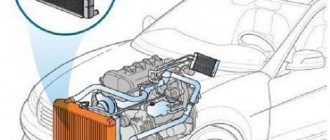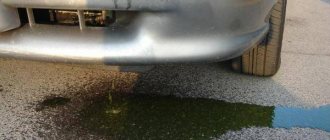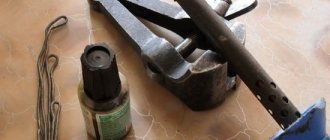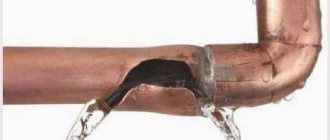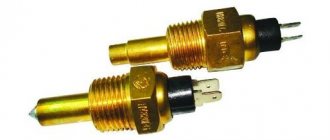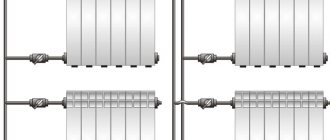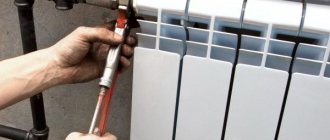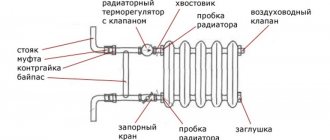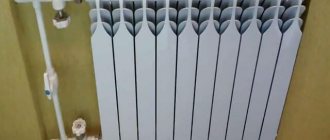- Types and scope of application
- Cold welding Poxipol: characteristics
- Advantages and disadvantages of the product
- How to use Poxipol: instructions for use
- Where to buy cold welding?
There are often moments when a part breaks down in the complex body of a car, without which further movement is impossible. To get to the nearest auto repair shop, the driver begins to rack his brains to solve the problem that has arisen. In such situations, Poxipol cold welding is always useful, thanks to which you can quickly restore the vehicle’s functionality and drive to a service station to provide full technical assistance. What is Poxipol glue, what is the price and instructions for use? Let's try to answer these exciting questions.
Types and scope of application
What does Poxipol glue glue? The product works effectively with any material:
· metal parts - since they are most common in the automotive industry, the use of cold welding Poxipol is more in demand among car owners, as well as in the field of repair of household equipment and appliances. The product will effectively eliminate minor malfunctions during equipment operation. The resulting connection will allow the repaired spare part to be used for more than one kilometer;
· various polymer products - given that the chemical industry produces a large variety of preparations for combining polymer materials, the Poxipol epoxy composition is in no way behind its competitors. With its help, strong connections of plastic pipes are obtained;
· ceramics and glass surfaces;
· natural stone – a feature of this building material is its heavy weight. Therefore, not every adhesive can solve the problem. But the Poxipol product feels quite comfortable. It can hold the elements firmly in adhesion without any problems. If the parts being glued are deformed again, the connecting seam will not even be damaged, but the material itself will crack. The drug is widely used in the installation of fireplaces and stoves in private homes;
· all types of linoleum - when performing home repairs, you often encounter a situation where you have to connect two sections of linoleum end-to-end. In such cases, cold welding Poxipol works better. It can also be used for gluing rubber products.
Advice. When using the product, do not forget about the load that acts on the part or assembly in which it is located. Please note that eliminating the damage is temporary and to guarantee safety it is better to install a new part
Features of soldering aluminum radiators
Modern cars mainly use aluminum radiators. Aluminum material does not solder well. Almost instantly after stripping, it becomes covered with a layer of oxide, which prevents soldering. On radio markets you can find a special active flux for aluminum. It greatly simplifies the soldering process.
You can use small metal shavings when soldering. It is applied to the repair site mixed with flux. During the application of solder, shavings scratch the surface of the aluminum. Under the layer of flux, the metal does not have time to oxidize, and soldering is successful. Please note that aluminum is a soft material, so you should not apply excessive force to avoid damaging the radiator.
Cold welding Poxipol: characteristics
So, this drug is capable of creating such strong connections that after some time it is impossible to break. And most importantly, to use cold welding you will not need any additional tools or equipment. The product in appearance resembles ordinary plasticine, which hardens very quickly, providing the connection with high strength. The plastic substance is based on an oligomer containing an epoxy group, which, under the influence of a hardener, forms a strong structure. Poxypol is a two-component adhesive, instructions for use are inside the package. To make the connection as effective as possible, you must mix both compounds correctly, otherwise the end result will not meet your expectations - the part will fall apart and the car will not be able to move.
Cold welding is often used in domestic conditions; it efficiently glues small parts, seals holes and levels surfaces. The product is easy to apply, retains its shape, does not spread and does not leave streaks on vertical surfaces. The glue is odorless and does not harm the health of others, so it can be used to restore broken children's toys.
Preparation for repair
So, the unexpected did happen. As a result of an accident or naturally, the radiator leaked. As one domestic politician said: “This has never happened, and here it is again!” Now you need to take some measures, otherwise the engine cooling system may need to be repaired.
First of all, you need to remove the unit from the engine compartment. To do this, first drain the antifreeze from the system into substitute containers. To do this, open all the drain plugs located on the block and the lower tank of the cooling device, or remove the rubber hose from the lower pipe.
The filler caps of the radiator and expansion tank must be open. Before removing the engine cooling fan, disconnect all hoses and electrical connectors.
After performing these operations, unscrew the fasteners and remove the device. Visually assess its condition. When the radiator is rather dead as a result of an accident, the purchase of a new device is certainly required. If the damage is minor, the radiator can be repaired.
If you have a garage and minimal skills in handling a soldering iron, you can repair the engine cooling radiator yourself. Before starting repairs, it is necessary to clean and wash the radiator externally to remove insects, dirt, debris, grease and oil deposits. To do this, you first need to clear the air gaps with a thin wooden stick, then blow them with compressed air and rinse them with a stream of water.
To determine the location of the damage, plug all the connections and immerse the radiator in a container of water. For greater reliability, you can pump air into the housing through one of the holes. Once the damaged area has been identified, it must be prepared for repair: clean the metal surface with a steel brush and degrease with solvent or gasoline.
Advantages and disadvantages of the product
The use of the adhesive composition Poxipol has a number of advantages:
· the seam formed during application retains its shape after hardening;
· interacts with any types of materials;
· does not damage plastic products;
· it is convenient to work with him;
· dries quickly - after an hour you can already use it;
· easy to use.
However, there are also disadvantages:
· the connection does not work effectively enough in conditions of increased vibration;
· analogues (copies of the product) have appeared on the market, which are noticeably worse in connection quality;
· may melt under high heat;
· the adhesive composition cannot be prepared in advance;
· the preparation is too small in volume, which creates certain difficulties when carrying out large-scale work.
How to use Poxipol: instructions for use
This Poxipol cold welding, instructions for use of which are located inside the package, is used in the following sequence:
1. At the first stage, it is necessary to prepare the surfaces to be glued. Clean from dirt. If there is rust, it is removed. Achieve a metallic shine to the surface using coarse sandpaper. It leaves deep scratches on the surface, which will enhance the bonding effect.
2. Next, you should thoroughly wash the part from dust and dry it, for example, using a hairdryer.
3. The resulting clean surface is degreased using acetone and other solvents.
4. Wipe the part thoroughly to avoid the presence of residual grease deposits on the surface to be bonded.
5. Only now, when the preparatory procedure is completed, can you begin to apply the composition to the desired areas of the product. Poxipol glue includes 2 tubes of substances that are mixed together. When performing work, follow the manufacturer's recommendations specified in the instructions.
6. The result is a homogeneous mixture. If it is not quickly applied to the area being treated, the glue will harden and will not be ready for further use.
7. Small holes or depressions are filled with binder and leveled. Deep cracks and chips are repaired using prepared metal patches.
The Poxipol cold seal package contains a spatula, which is used to mix the compositions of two tubes. Due to its composition, the product does not pose a danger to human health. The red tube contains a colorless mixture. Blue contains a substance that resembles plasticine. It kneads easily with your hands. The color is white, gray and gray-brown.
The last stage - it is necessary to keep the finished product for 24 hours for complete hardening. Only after this can it be subjected to further processing.
Important! When working with solvents, you must follow safety precautions. Do not allow liquid to come into contact with the skin of your hands and face. If the solvent does come into contact with exposed areas of your hands or eyes, you should immediately wash these areas with plenty of soap and water.
How to glue with Poxipol? Cold welding is easy and convenient to work with. It allows you to seal small holes in a radiator under pressure. There is no need to drain the liquid. For detailed information on how to use cold welding correctly, we suggest watching the video below.
The process of preparing a two-component composition includes the following steps:
1. Squeeze out their contents in an equal volume from two tubes (red and blue) onto a flat lid or plate.
2. The mixture is thoroughly mixed with the spatula included with the product.
Work on preparing a two-component composition should be carried out immediately before gluing two surfaces. At the same time, they must be completely cleaned of dirt, dust, and rust.
Bonding two surfaces occurs as follows:
· the resulting composition is applied to one part that is to be joined;
· the second element is strongly pressed against the first part and held for 2-3 minutes. The hardening time of Poxipol is 1 hour;
· the glued part is left completely alone. Drying time and complete hardening is 24 hours.
Advice. As soon as two parts of a part or surface are connected, you can still adjust their position within 10 minutes.
The Poxipol product has become especially widespread not only in everyday life, but also at car service stations and small auto repair shops. With its help you can do the following:
· effectively seal the holes in the fuel tank of the vehicle;
· restoration of the car radiator;
· improve the strength of the car body by strengthening the welds.
Many car owners complain about the quality of mufflers, which quickly fail due to corrosion.
Is it possible to seal a radiator with Poxypol? There is a certain opinion on this matter. Since eliminating corrosion holes using welding equipment does not always bring the desired result (deformation or additional burning of the radiator wall may occur), it is better to carry out repairs using cold welding. The product has a high degree of protection against negative environmental manifestations: temperature changes, reagents on the road surface. Many car owners have no idea what temperature Poxipol can withstand. The product can withstand temperatures up to plus 150 degrees Celsius without losing its qualities. The glue can also be used to join products made of wood, plastic, as well as glass and ceramic materials. Cold welding for metal is always useful in everyday life.
Soldering a radiator at home
Soldering cooling system radiators is a classic repair method. It was used at the beginning of the last century. At that time, radiators were made of copper or its alloys (usually brass). Soldering technology was mature at that time. A copper kettle could be repaired in any city. The soldering process is performed at the melting temperature of the solder used. To perform soldering, the following materials and tools are required:
- a powerful soldering iron of 220 Volts (it is better to use a hammer type with a power of 250 or 200 Watts, if not available, at least 100 Watts);
- medium grit sandpaper;
- active flux;
- tin-lead solder POS-60 or POS-40;
- solvent for surface cleaning.
The pre-repaired surface of the radiator is cleaned of foreign contaminants. Next, if necessary, to provide access to the soldering area, carefully remove the cooling fins. Then a final cleaning is carried out using sandpaper.
The soldering iron (if it is new) is pre-tinned. To do this, active flux is applied to its tip, heated to operating temperature, and then solder is melted onto the soldering iron tip. If there is no active flux, you can use an aspirin tablet. At the same time, it is advisable not to inhale the “thermonuclear” fumes from the tablet.
Next, active flux is applied to the cleaned area. After this, a large drop of solder is applied to the soldering iron tip and the soldering process is carried out. It requires a little experience. It may take time to get good soldering done.
